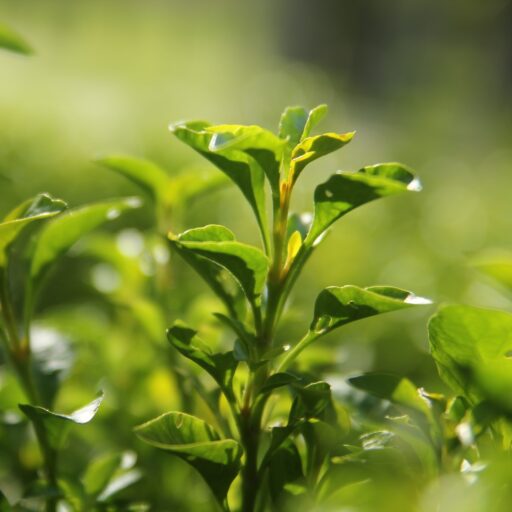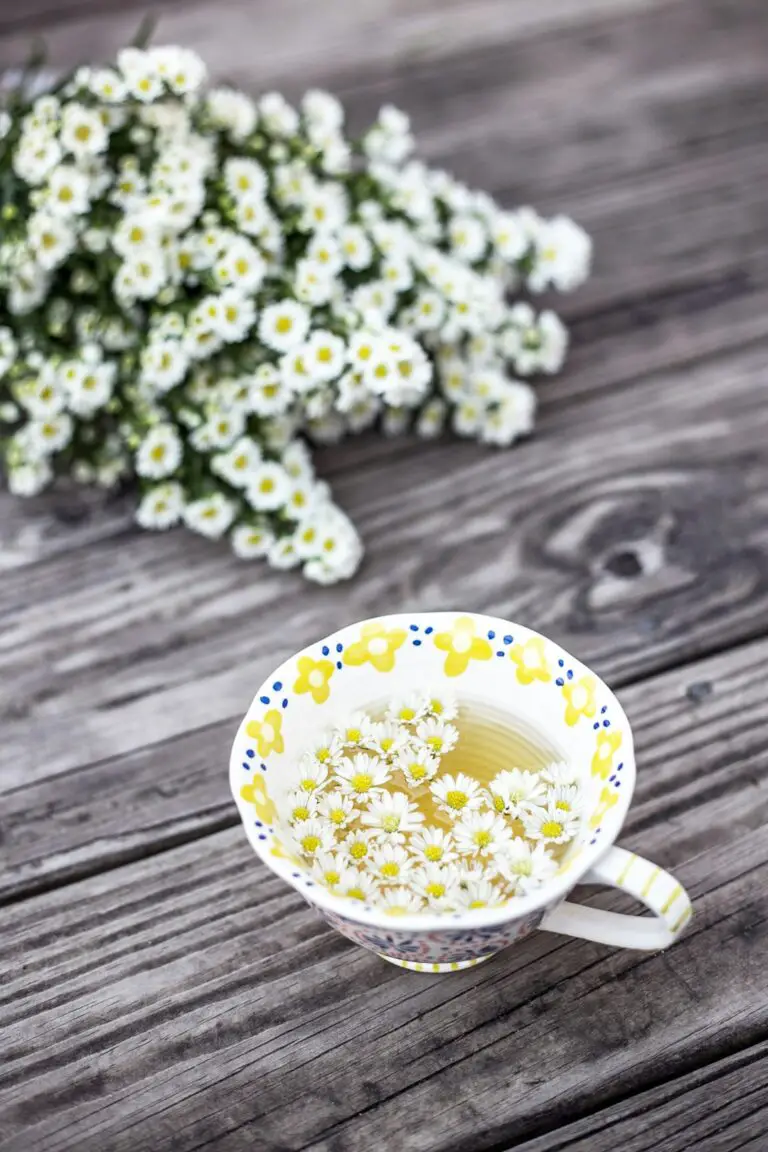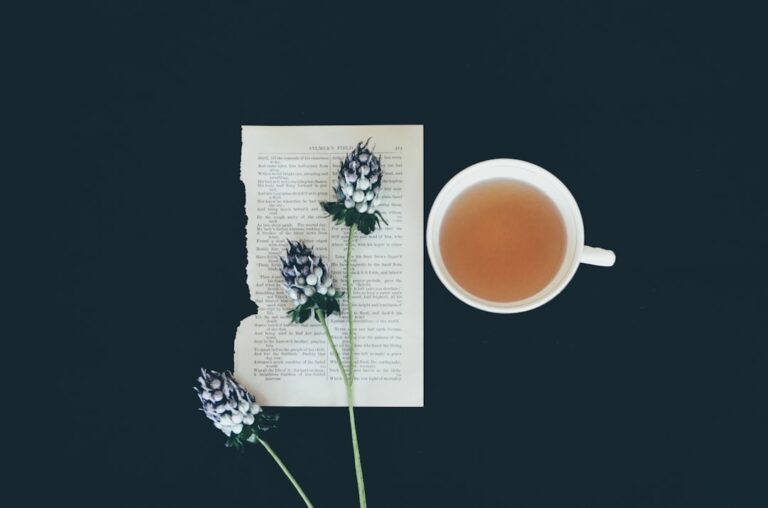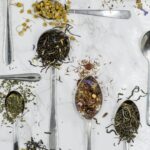Support our educational content for free when you purchase through links on our site. Learn more
Discover 10 Incredible Tea Plants for Sale That Will Transform Your Garden in 2024! 🌱
Have you ever dreamed of sipping a cup of tea brewed from leaves you’ve grown yourself? Imagine the satisfaction of plucking fresh tea leaves from your garden and crafting the perfect brew to share with friends! At Growing Teas™, we believe that every tea lover should experience the joy of cultivating their own tea plants. In this article, we’ll explore 10 remarkable tea plants for sale that can turn your backyard into a lush oasis of flavor.
Did you know that tea is the second most consumed beverage in the world, right after water? 🍵 Yet, many people still rely on store-bought options that lack the freshness and depth of flavor found in home-grown tea. From robust black teas to delicate green varieties, we’ll guide you through the best options available, share essential growing tips, and even reveal how to harvest and process your own tea leaves.
Ready to embark on your tea-growing adventure? Let’s dive in!
Key Takeaways
- Explore 10 unique tea plants that you can buy today to start your own tea garden.
- Learn about the best growing practices to ensure your tea plants thrive and produce delicious leaves.
- Discover the history and benefits of growing your own tea, including freshness and control over quality.
- Find reputable sources for purchasing quality tea plants, ensuring you get the best for your garden.
Ready to get started? Check out our Camforest Tea Plants or Logee’s Tea Plants for high-quality options! 🌿
Table of Contents
- Quick Tips and Facts About Tea Plants for Sale
- The Rich History of Tea Plants: From Leaf to Brew
- Top 10 Tea Plants You Can Buy Right Now
- Where to Find Quality Tea Plants for Sale
- Growing Your Own Tea: A Step-by-Step Guide
- Essential Tips for Caring for Your Tea Plants
- The Best Tea Plant Varieties for Different Climates
- Common Pests and Diseases in Tea Plants
- Sustainable Tea Plant Farming Practices
- The Benefits of Growing Your Own Tea
- How to Harvest and Process Your Tea Leaves
- Tea Plant Care: Seasonal Tips and Tricks
- Frequently Asked Questions About Tea Plants for Sale
- Conclusion
- Recommended Links
- FAQ
- Reference Links
Quick Tips and Facts About Tea Plants for Sale
Are you looking to grow your own tea? 🍵 Here are some quick tips and facts to get you started:
- Tea plants are a type of camellia: Specifically, they are Camellia sinensis, a species of flowering plant that is native to Asia.
- There are many varieties of tea plants: From black tea to green tea, oolong tea, and white tea, each variety requires specific growing conditions and harvesting techniques.
- Tea plants can be grown in a variety of climates: While they prefer cooler temperatures and high humidity, tea plants can be grown in a range of climates, from tropical to temperate.
- Tea plants require regular maintenance: This includes pruning, fertilizing, and pest management to ensure healthy growth and optimal tea production.
- Freshly harvested tea is superior to prepackaged tea: If you’re looking for the best flavor and aroma, consider growing your own tea plants and harvesting them regularly.
Check out our article on Is It Easy to Grow Your Own Tea? 10 Essential Tips for Success in 2024! for more information on getting started with tea cultivation.
The Rich History of Tea Plants: From Leaf to Brew

Tea has been a beloved beverage for centuries, with a rich history that spans across cultures and continents. From ancient China to modern-day tea plantations, the art of tea cultivation has evolved over time.
- Tea originated in China: According to legend, tea was first discovered by the Chinese emperor Shennong in 2737 BCE.
- Tea was a luxury item: In ancient China, tea was a rare and expensive commodity, reserved for the wealthy and elite.
- Tea was introduced to Europe: In the 17th century, tea was introduced to Europe by Dutch traders, where it became a popular beverage among the upper class.
Today, tea is grown in many countries around the world, with different regions specializing in specific types of tea. From the rolling hills of Japan to the tea plantations of India, the art of tea cultivation continues to thrive.
Top 10 Tea Plants You Can Buy Right Now
Looking to start your own tea garden? Here are the top 10 tea plants you can buy right now:
- Camellia sinensis: The most common type of tea plant, Camellia sinensis is a versatile variety that can be used to make black, green, oolong, and white tea.
- Assam tea plant: Native to India, the Assam tea plant is known for its strong, malty flavor and is often used to make black tea.
- Darjeeling tea plant: Grown in the Himalayan foothills of India, the Darjeeling tea plant is known for its light, floral flavor and is often used to make green tea.
- Japanese tea plant: Native to Japan, the Japanese tea plant is known for its delicate, slightly sweet flavor and is often used to make green tea.
- Kenyan tea plant: Grown in the highlands of Kenya, the Kenyan tea plant is known for its bright, coppery flavor and is often used to make black tea.
- Lapsang souchong tea plant: Native to China, the Lapsang souchong tea plant is known for its smoky, robust flavor and is often used to make black tea.
- Oolong tea plant: A partially fermented tea, oolong tea is known for its complex, floral flavor and is often used to make oolong tea.
- Pu-erh tea plant: Native to China, the pu-erh tea plant is known for its earthy, mellow flavor and is often used to make pu-erh tea.
- Rooibos tea plant: Native to South Africa, the rooibos tea plant is known for its caffeine-free, nutty flavor and is often used to make herbal tea.
- Yellow tea plant: A lightly fermented tea, yellow tea is known for its delicate, floral flavor and is often used to make yellow tea.
Where to Find Quality Tea Plants for Sale
Looking for high-quality tea plants to start your own tea garden? Here are some reputable sources to consider:
- Camforest: A nursery specializing in tea plants, Camforest offers a wide variety of tea plants for sale, including Camellia sinensis and other specialty varieties. Shop Camforest
- Logee’s: A nursery specializing in rare and unusual plants, Logee’s offers a selection of tea plants for sale, including Camellia sinensis and other varieties. Shop Logee’s
- Camellia Shop: A nursery specializing in camellias, Camellia Shop offers a selection of tea plants for sale, including Camellia sinensis and other varieties. Shop Camellia Shop
Growing Your Own Tea: A Step-by-Step Guide
Growing your own tea can be a rewarding experience, but it requires careful planning and attention to detail. Here’s a step-by-step guide to get you started:
Step 1: Choose the Right Tea Plant
- Select a variety: Choose a tea plant variety that is suitable for your climate and desired type of tea.
- Check the hardiness zone: Make sure the tea plant you choose is hardy in your area.
Step 2: Prepare the Soil
- Test the pH: Tea plants prefer slightly acidic soil with a pH between 5.5 and 6.5.
- Add organic matter: Add compost or well-rotted manure to improve soil fertility and drainage.
Step 3: Plant the Tea Plant
- Plant in the spring: In most climates, spring is the best time to plant tea plants.
- Water thoroughly: Water the tea plant thoroughly after planting and keep the soil consistently moist during the first year.
Step 4: Provide Regular Maintenance
- Prune regularly: Prune the tea plant regularly to maintain shape and promote healthy growth.
- Fertilize: Fertilize the tea plant regularly with a balanced fertilizer.
Essential Tips for Caring for Your Tea Plants
Here are some essential tips for caring for your tea plants:
- Water regularly: Tea plants require consistent moisture, especially during the first year.
- Provide shade: Tea plants prefer partial shade, especially in warmer climates.
- Monitor for pests: Regularly monitor your tea plants for pests and diseases.
The Best Tea Plant Varieties for Different Climates
Here are some of the best tea plant varieties for different climates:
- Tropical climates: Camellia sinensis and other varieties that are tolerant of high temperatures and humidity.
- Temperate climates: Assam, Darjeeling, and other varieties that are tolerant of cooler temperatures and moderate humidity.
- Cooler climates: Japanese tea plant and other varieties that are tolerant of cooler temperatures and low humidity.
Common Pests and Diseases in Tea Plants
Here are some common pests and diseases that can affect tea plants:
- Aphids: Small, soft-bodied insects that can transmit diseases and reduce tea plant growth.
- Whiteflies: Small, winged insects that can transmit diseases and reduce tea plant growth.
- Fungal diseases: Such as root rot and leaf spot, which can be caused by excessive moisture and poor air circulation.
Sustainable Tea Plant Farming Practices
Here are some sustainable tea plant farming practices to consider:
- Organic farming: Avoid the use of synthetic fertilizers and pesticides.
- Integrated pest management: Use a combination of techniques to manage pests and diseases, including crop rotation, biological control, and cultural controls.
- Soil conservation: Use techniques such as mulching and contour farming to reduce soil erosion and promote soil health.
The Benefits of Growing Your Own Tea
Here are some benefits of growing your own tea:
- Freshness: Freshly harvested tea is superior to prepackaged tea in terms of flavor and aroma.
- Control: Growing your own tea allows you to control the quality and quantity of your tea.
- Cost-effective: Growing your own tea can be cost-effective in the long run.
How to Harvest and Process Your Tea Leaves
Here’s a step-by-step guide to harvesting and processing your tea leaves:
Step 1: Harvest the Tea Leaves
- Choose the right time: Harvest the tea leaves at the right time, depending on the type of tea you want to make.
- Use the right tools: Use scissors or a tea plucker to harvest the tea leaves.
Step 2: Withhold the Tea Leaves
- Withhold the tea leaves: Withhold the tea leaves to allow them to soften and release their enzymes.
- Monitor the temperature: Monitor the temperature to ensure that the tea leaves are not too hot or too cold.
Step 3: Roll the Tea Leaves
- Roll the tea leaves: Roll the tea leaves to release the enzymes and start the fermentation process.
- Use the right tools: Use a tea roller or a rolling pin to roll the tea leaves.
Step 4: Dry the Tea Leaves
- Dry the tea leaves: Dry the tea leaves to stop the fermentation process and preserve the tea.
- Use the right tools: Use a tea dryer or a food dehydrator to dry the tea leaves.
Tea Plant Care: Seasonal Tips and Tricks
Here are some seasonal tips and tricks for tea plant care:
- Spring: Prune the tea plant in the spring to promote healthy growth and encourage new leaves.
- Summer: Monitor the tea plant for pests and diseases, and provide regular watering and fertilization.
- Fall: Harvest the tea leaves in the fall, and prepare the tea plant for winter by pruning and mulching.
- Winter: Protect the tea plant from frost and cold temperatures, and provide minimal watering and fertilization.
Frequently Asked Questions About Tea Plants for Sale
Here are some frequently asked questions about tea plants for sale:
-
Q: What type of tea plant should I buy?
A: Choose a tea plant variety that is suitable for your climate and desired type of tea. -
Q: How do I care for my tea plant?
A: Provide regular watering, fertilization, and pruning to promote healthy growth and optimal tea production. -
Q: Can I grow tea plants indoors?
A: Yes, you can grow tea plants indoors, but make sure to provide sufficient light and temperature control.
Conclusion

Growing your own tea plants can be an incredibly rewarding journey! 🌱 From the satisfaction of nurturing a plant to the delight of sipping fresh tea made from your own leaves, it’s an experience like no other.
Summary of Positives and Negatives
Positives:
- Freshness: Nothing beats the taste of freshly harvested tea. You’ll enjoy flavors that prepackaged teas simply can’t match!
- Control: You have complete control over how your tea is grown, ensuring it’s free from harmful chemicals and tailored to your preferences.
- Variety: With numerous varieties available, you can explore different flavors and types of tea right from your garden.
Negatives:
- Time-Consuming: Growing tea requires patience and regular maintenance, which can be a commitment.
- Climate Sensitivity: Not all tea plants thrive in every climate, so you’ll need to choose wisely based on your local conditions.
In conclusion, if you’re ready to embark on this flavorful adventure, we confidently recommend investing in quality tea plants from reputable sources like Camforest or Logee’s. You won’t regret it!
Recommended Links
👉 Shop High-Quality Tea Plants:
- Camforest Tea Plants: Shop Camforest
- Logee’s Tea Plants: Shop Logee’s
- Camellia Shop: Shop Camellia Shop
Books on Tea Cultivation:
FAQ

Can you grow tea plants in the US?
Absolutely! 🌎 While tea plants thrive in warmer climates, certain varieties can be grown in various regions of the US. For example, parts of California, Florida, and the southern states are particularly well-suited for tea cultivation. You can also grow them indoors or in greenhouses in cooler areas.
Read more about “Can you grow tea plants in the US?”
What is the easiest tea plant to grow?
The Camellia sinensis is considered one of the easiest tea plants to grow, especially if you’re starting out. It’s adaptable to different climates and can produce a range of tea types, from green to black. With proper care, this plant can thrive and reward you with delicious tea leaves!
Read more about “Is Growing Tea Difficult? 10 Essential Insights for Aspiring Tea Growers … 🍃”
How long does it take for a tea plant to grow?
Typically, tea plants take about 3 to 5 years to mature enough for harvesting. However, the exact time can vary based on the variety, growing conditions, and care provided. Patience is key, but the wait is well worth it!
Read more about “Is It Easy to Grow Your Own Tea? 10 Essential Tips for Success in 2024! 🌱”
What plant is best for tea?
While Camellia sinensis is the primary plant used for traditional teas, other plants like Rooibos (for herbal tea) and Peppermint can be excellent choices if you’re looking to diversify your tea garden. Each has unique flavors and benefits, so consider what types of tea you enjoy most!
Read more about “Discover the 15 Must-Have Plants for Your Dream Tea Garden! 🌱 …”
How should I prepare my soil for tea plants?
Tea plants prefer slightly acidic soil with a pH of 5.5 to 6.5. Amending your soil with organic matter, like compost, can improve fertility and drainage, creating an ideal environment for your tea plants to thrive.
When is the best time to harvest tea leaves?
The best time to harvest tea leaves is in the spring, when the young leaves are tender and flavorful. For certain varieties, you can also harvest during the summer months. Regular harvesting encourages new growth and can lead to multiple flushes throughout the growing season.
Reference Links
- Camforest Tea Plants
- Logee’s Tea Plants
- Camellia Shop Tea Plants
- History of Tea
- Health Benefits of Tea
Now you’re all set to dive into the wonderful world of tea cultivation! Happy growing! 🌿✨



